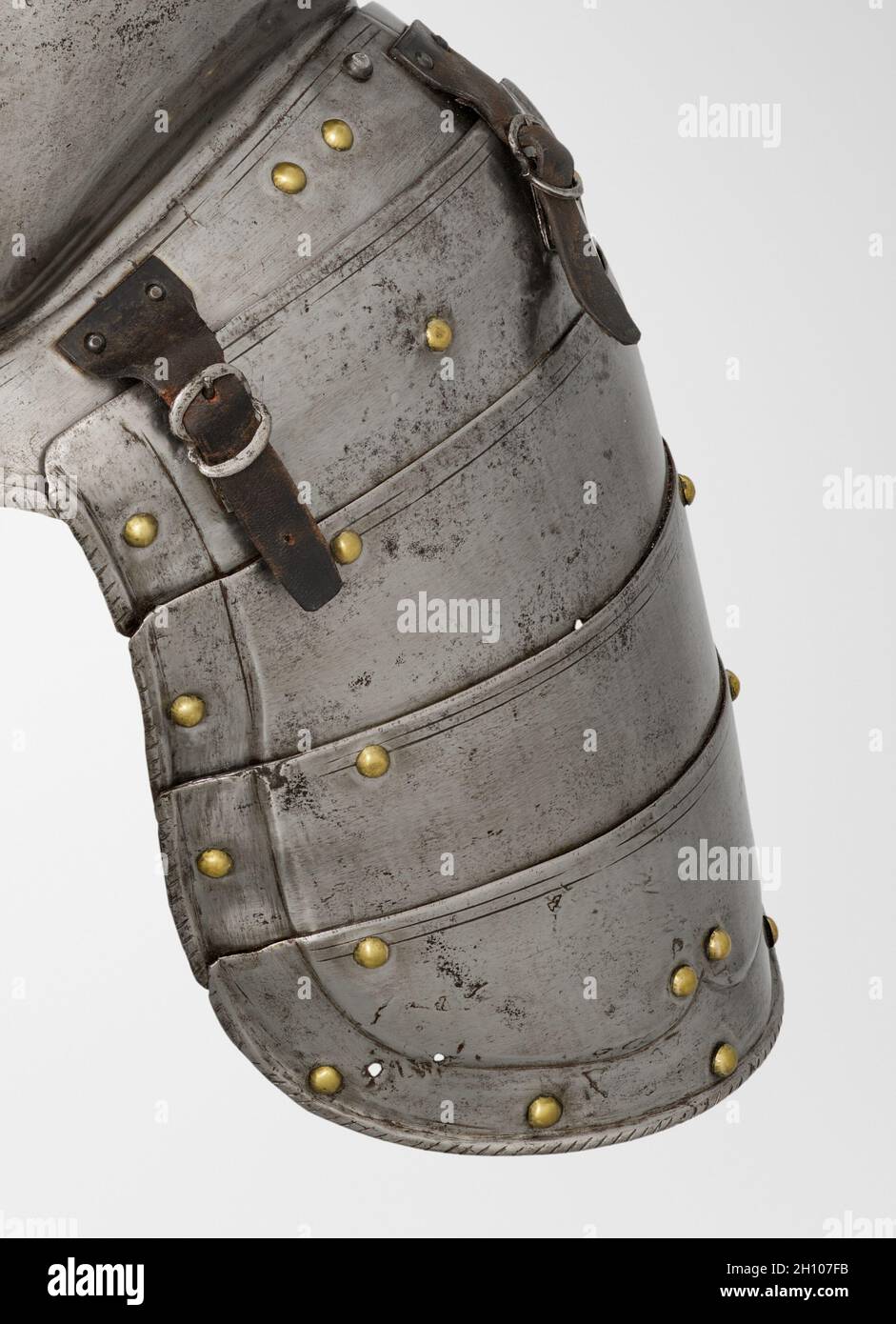Tasset (proper left), c. 1560-1580. South Germany, 16th century. Steel, leather straps, brass rivets; overall: 28 x 22.6 cm (11 x 8 7/8 in.). This armor was developed for the joust-a sporting combat between two mounted contestants. Although all of the elements of this armor date from the same period, they are not all from the same suit. This armor is thus called "composed." It also shows the asymmetry of jousting armor. The participants rode along a wall-like barrier known as a "tilt" with their left sides facing one another. Consequently, armor on that side of the body had to be thicker. Not

Image details
Contributor:
CMA/BOT / Alamy Stock PhotoImage ID:
2H107FBFile size:
24 MB (900.8 KB Compressed download)Releases:
Model - no | Property - noDo I need a release?Dimensions:
2463 x 3400 px | 20.9 x 28.8 cm | 8.2 x 11.3 inches | 300dpiDate taken:
1 July 2020More information:
This image is a public domain image, which means either that copyright has expired in the image or the copyright holder has waived their copyright. Alamy charges you a fee for access to the high resolution copy of the image.
This image could have imperfections as it’s either historical or reportage.
Tasset (proper left), c. 1560-1580. South Germany, 16th century. Steel, leather straps, brass rivets; overall: 28 x 22.6 cm (11 x 8 7/8 in.). This armor was developed for the joust-a sporting combat between two mounted contestants. Although all of the elements of this armor date from the same period, they are not all from the same suit. This armor is thus called "composed." It also shows the asymmetry of jousting armor. The participants rode along a wall-like barrier known as a "tilt" with their left sides facing one another. Consequently, armor on that side of the body had to be thicker. Note the large plate (grandguard) over the left shoulder for extra protection. Also, the breathing holes in the helmet were placed on the right side (farthest from an opponent's lance) to avoid injuries from splinters. The bracket attached to the right breastplate is called the lance-rest, a shock-absorbing support designed to accommodate the lance when "couched" under the right armpit.